Angela Merkel’s CDU/CSU parties have gained the largest swings towards them at the 2013 German federal election, with minor parties generally losing ground.
The CDU/CSU gained a large 7.8% swing towards them, with the centre-left Social Democrats gaining a smaller 2.7% swing. The three minor parties with parliamentary seats all suffered negative swings. The left-wing Left Party lost 3.3% and the Greens lost 2.3%.
The biggest loser was the centre-right Free Democratic Party, the junior coalition partner in the centre-right government. The FDP suffered a swing of just under 10%, and will miss out on representation in the Bundestag for the first time in post-war history, with only 4.8% of the national ‘second vote’.
The Alternative for Germany, a new Euroskeptic party, also polled just below 5%. The combination of AfD and the FDP both missing out on the 5% threshold means that close to 10% of the vote was locked up in right-wing parties that didn’t get a single seat.
So while the CDU and CSU won a massive victory on their own, the three centre-left parties collectively hold a majority in the Bundestag, 319 votes to 311.
Despite this it seems most likely that we will see a return to the CDU/CSU and SPD grand coalition as existed from 2005 to 2009.
The German electoral system is a proportional representation system. 299 local constituencies each elect a single member by first past the post voting. Voters then cast a second vote to elect members off the party list. Parties need to poll at least 5% of the national ‘second vote’ to be entitled to list members, although list members are allocated by state.
You can download the Google Earth maps of the 2009 and 2013 constituencies, with the winners of the ‘first vote’ in each constituency added to the 2013 map, from the Tally Room maps page.
You can also download a time-series map which allows you to alternate between the two election results. I’ll be adding the 2009 and 2013 results in the ‘second vote’ to this map over coming days.
Below the fold are a series of maps showing the results in the constituencies for each part of Germany, which was dominated by the CDU and CSU, who won 236 out of 299 constituency seats. The SPD lost a batch of seats, but the Left Party, who won a swathe of constituencies across East Germany in 2009, have been restricted to the Berlin area.
But of course the election was decided by the ‘second vote’, and is easiest to analyse on a state basis.
The CDU gained a swing in every states, ranging from 4.3% in Hamburg to over 11% in three states. The Social Democrats suffered a 2% swing in Brandenburg, and their vote was steady in Saxony, but gained swings in every other state, peaking at a swing of 5.4% in Bremen.
The Left Party suffered a 3.3% swing nationally, with the state-based swings ranging from 1.7% in Berlin to 11.2% in Saarland. The Greens polled behind the Left for the second election in a row, but by a smaller margin after suffering a 2.3% national swing. The smallest swings against the Greens were 1.1% in Thuringia and Saarland, with the biggest being 3.3% in Bremen and Schleswig-Holstein.
The Free Democratic Party suffered a devastating 9.8% national swing. The biggest state swing was 11.1% in Rhineland-Palatinate, and managed to limit the swing to only 6.8% in Brandenburg.
The Alternative for Germany (AfD) polled 4.7% nationally, with the state votes varying from 3.7% in Bremen and Lower Saxony to 6.8% in Saxony.
Keep reading to view some election results maps. I’ll be doing some more analysis on the German elections and coming back with another post later this week.
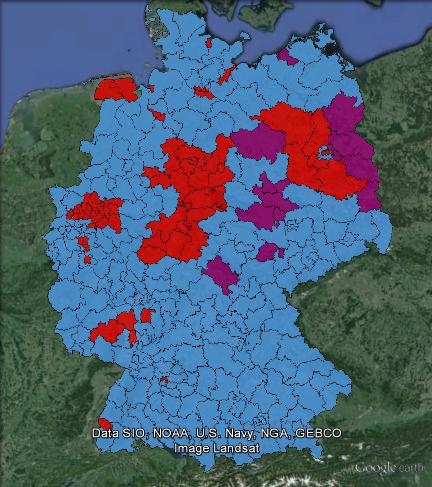
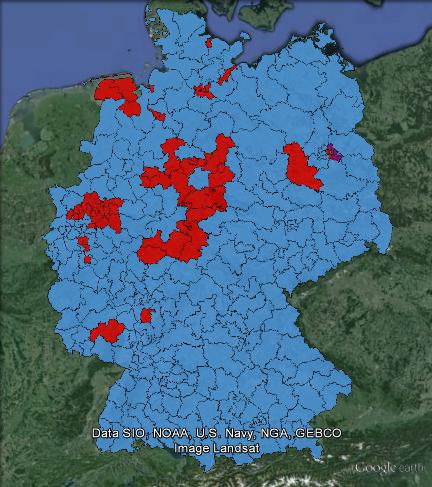
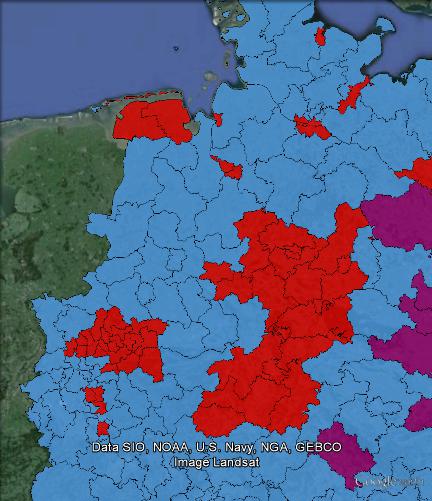
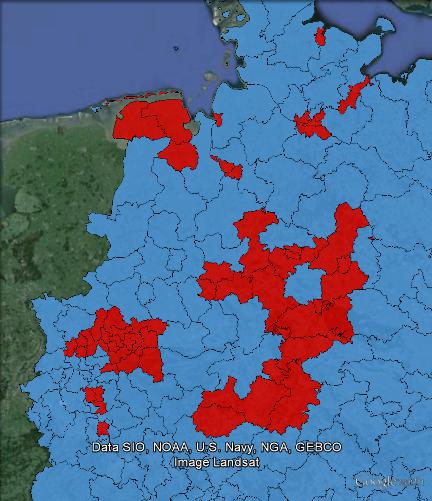
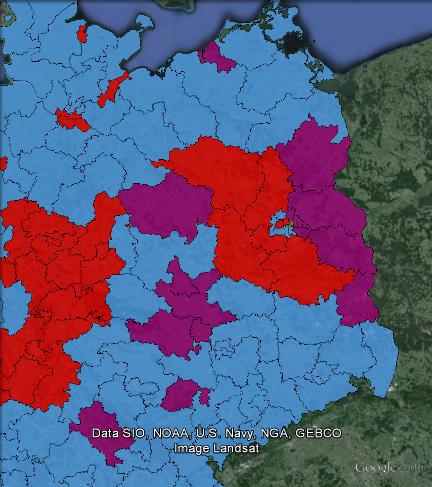
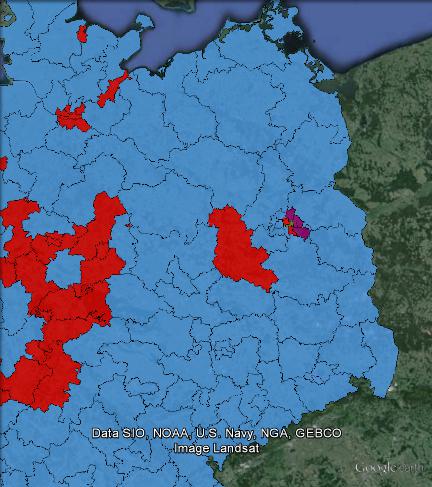
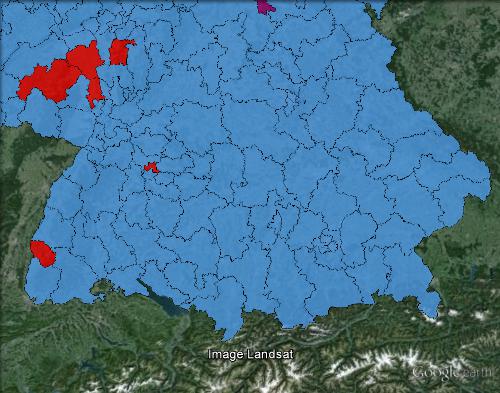
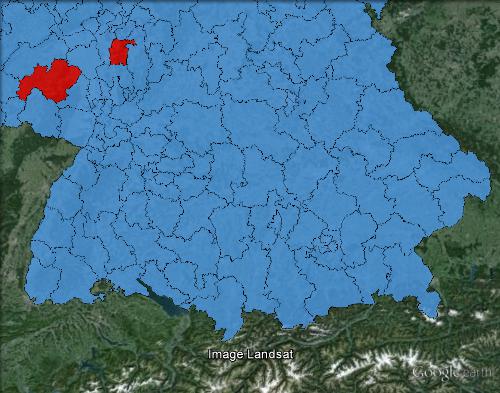
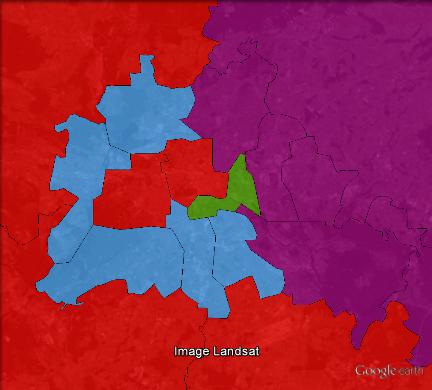
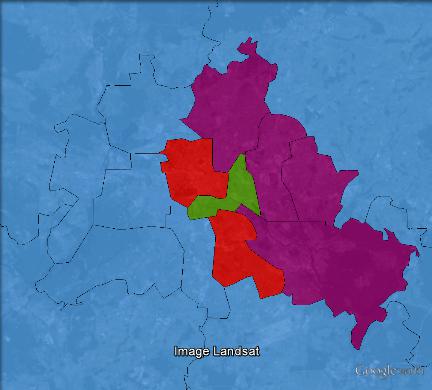



Any idea when the FDP last won a constituency seat? My knowledge of German elections is a bit rusty (gained an undergrad in the early 1990s) but I think they held a few in B-W until at least the late 1950s.
If this is correct, the Unions’ tactical mistakes of not “allowing” a few FDP constituency seats (rather as the Tories didn’t oppose some of the UK Liberals in the early 1950s) has been a big mistake:
The 5 per cent Clause and the FDP: the FDP is hovering around 5-6 per cent and if it gets under 5 per cent, then for the first time since the founding of the state, it won’t be in the Bundestag, and its survival as a party will be in serious doubt. But the FDP has been close to the 5 per cent hurdle before and has pulled through, sometimes due to “borrowed” votes (“Leihstimmen”) from CDU voters. For real geeks, it’s worth noting that if a party wins three or more constituency seats, it gets seats allocated on the basis of its percentage, even if only 4 per cent say. The FDP hasn’t won a constituency seat since the 50s, so that won’t save them, but the Linke won 16 constituency seat in the former DDR last time, and therefore the 5 per cent clause holds few fears for it as a part (and it’s polling 8-10 per cent)
From here:
http://conservativehome.blogs.com/international/2013/09/from-andrewimarshall-bundestagswahlen-for-beginners-.html
Wow, the state recent states results are awful too. Since 2011, they’ve been zeroed out in seven states. In two states, they lost more than half their seats over the same period (losing 8 of 14 in S-H and 8 of 15 in B-W). In the Hesse elections held the same day as the federal election, they just nosed over the threshold, giving them 6 seats (down 14 from 20), but could presumably fall below on the final count, which would put them at eight states where they’ve lost all their seats. The only bright spots since 2011 have been Hamburg (up from 0 to 9), NR-W (up 9 to 22) and Lower Saxony (up 1 to 14).
The other three states have elections next August/September, so it will be interesting to see if being out of coalition helps them any.
Comments are closed.